
Loupe. The magazine of Christopher Ward. Issue 29. Summer 2023


If Isaac Newton made watches
If Isaac Newton made watches
Even Britain’s most famous – and famously single-minded – physicist would find the gravitational pull of the C1 Moonglow hard to resist. Powered by our ingenious JJ04 movement, and with a sapphire dial that boasts two beautiful 3D ‘moons’, it can chart the phases of the moon accurately for 128 years. Add in surprisingly durable construction and sophisticated British design and you’re looking at a watch that’s simply out of this world. Want to know more?
Even Britain’s most famous – and famously single-minded – physicist would find the gravitational pull of the C1 Moonglow hard to resist. Powered by our ingenious JJ04 movement, and with a sapphire dial that boasts two beautiful 3D ‘moons’, it can chart the phases of the moon accurately for 128 years. Add in surprisingly durable construction and sophisticated British design and you’re looking at a watch that’s simply out of this world. Want to know more?


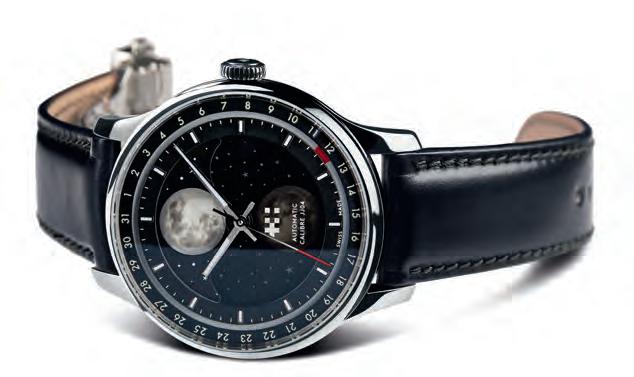
Do your research.
Do your research.
christopherward.com
christopherward.com

Loupe.
The magazine of Christopher Ward.
Every issue of Loupe has some connection to its featured watch.
And this time around, that link is particularly strong.
Using integration as the starting point –The Twelve is an ‘integrated’ watch – Loupe 29 features stories that focus on how people are brought together.
First, there’s the watch itself. If you want to see how our teams in Maidenhead and Biel collaborated on The Twelve, head to Matt Bielby’s article on page 16.
Football stadiums are another catalyst for togetherness. Now journalist Ryan Herman has collated a photo-book about the world’s most beautiful grounds – and you can see his favourites on page 28.
Dancing is another human communal activity – one which Emma Warren has profiled in her new book, Dance Your Way Home. If you like to cut a rug, you’ll love the interview on page 34.
Enjoy the issue!
Twelve is the magic number
The basic units of time (60 seconds, 60 minutes, 24 hours) can all be perfectly divided by the number 12. This isn’t why we named our latest collection, ‘The Twelve’, but it’s certainly a convenient offshoot. Instead, the name derives from the 12-sided polygon, or dodecagon, that forms the distinctive bezel design of the watch.
The Twelve is an integrated bracelet watch, a style that has been around since the 1960s and ’70s, but which has become popular in recent years, primarily fuelled by the massive demand for Patek Philippe’s Nautilus and the Audemars Piguet Royal Oak.

We started thinking about a Christopher Ward integrated watch as far back as 2017 but it wasn’t until alighting on the dodecagon we had a design that justified inclusion in this category. And so, finally, we’re pleased to present a watch whose name is a symbol of completeness and symmetry – just like The Twelve.
Mike & Peter Co-founders
Editor: Anthony Teasdale
Art Director: Jamie Gallagher
Designer: Sam Burn
Photography: Peter Canning
Cover image: CW designer, Will Brackfield
4
1 Park St, Maidenhead, Berkshire SL6 1SL

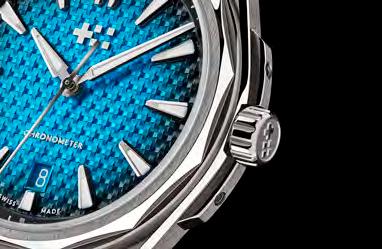
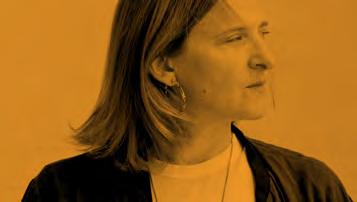
5 Contents Features 16 – 27 Forged from genius How The Twelve brings the integrated watch to Christopher Ward 28 – 33 Grounds for appeal Incredible photographs of the world’s most beautiful football stadiums 34 –36 The greatest dancers Interview with Emma Warren, author of Dance Your Way Home 38 – 41 Firestarter Profile of indie watch brand, William Wood Regulars 6 – 11 The Brief Latest news from Christopher Ward and the wider world of watches 42 – 45 O-pinion Pattie Boyd photo book; Shakespeare sonnet; watchmaker mural; the best history podcasts 46 – 49 Insight Why Ken Kessler isn’t a fan of watch brands’ ambassadors 50 Great watchwearers John F. Kennedy Grounds for appeal 28 — 33 Forged from genius 16 — 27 The greatest dancers 34 — 36

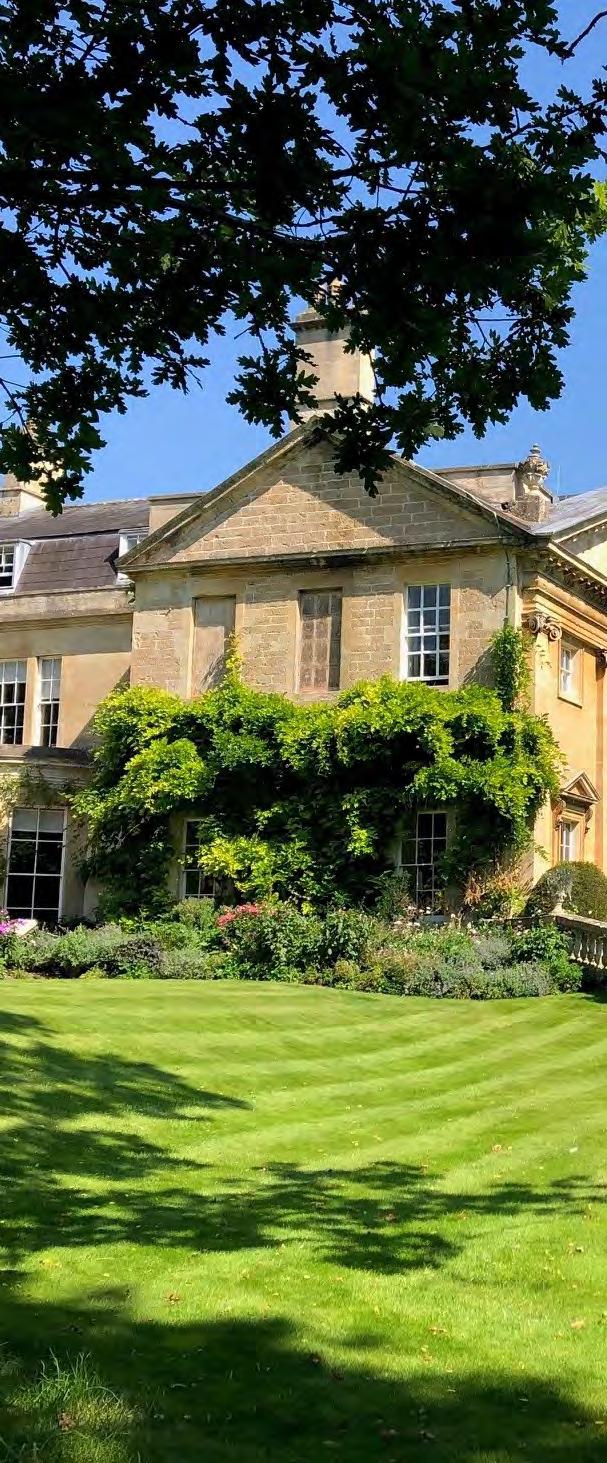
6
The stunning grounds of Belcombe Court where If Opera performances are held
Latest news from Christopher Ward and the wider world of watches
Christopher Ward announces sponsorship of an exciting new
opera company
Access all arias!
In the stuffy world of opera, ‘If Opera’ is seen as a ‘challenger brand’ And that’s something that appeals to Christopher Ward CEO Mike France, who’s announced a deal for CW to become its main sponsor.
“If Opera has the goal Opera Holland Park (OHP) had at its inception: to democratise opera and make it accessible to as many people as possible,” he says. “At the same time it’s also giving young British opera singers performance opportunities that are hard to come by.”
Executive director of If Opera is Michael Volpe, former head of Opera Holland Park. He says the company is doing things differently – especially its refusal to fly in big names for highly-paid performances.

“We’re going back to an old model of producing opera,” he says. “We’ll have a fixed number of singers on contracts who’ll get a weekly wage. In the seasons, they’ll have roles in three operas. This creates a tight group, and makes it financially secure and stable. It’s quite radical!”
The success of the C1 Bel Canto – a chiming watch named after a melodic style of operatic singing – has cemented the link between CW and opera. It’s something Michael Volpe is keen to build on.
“There’s a connection between Christopher Ward and the sensation of when you sit and experience opera,” he says. “The part of your brain that reacts to beautiful watches is the same as when you experience something visual and musical on stage. And like If Opera, CW gives people incredible experiences without asking them to spend a fortune.”
ifopera.com
7
In tune with the future
Here we talk to CW Technical Director Frank Stelzer about his latest gadget.
Hi Frank. Tell us about the new machine
It’s called the ‘Soundcheckbox’. With it, the sound produced by a chiming watch can be analysed in terms of frequency spectrum and volume. The specific sound image of a watch can also be recorded, compared and saved.
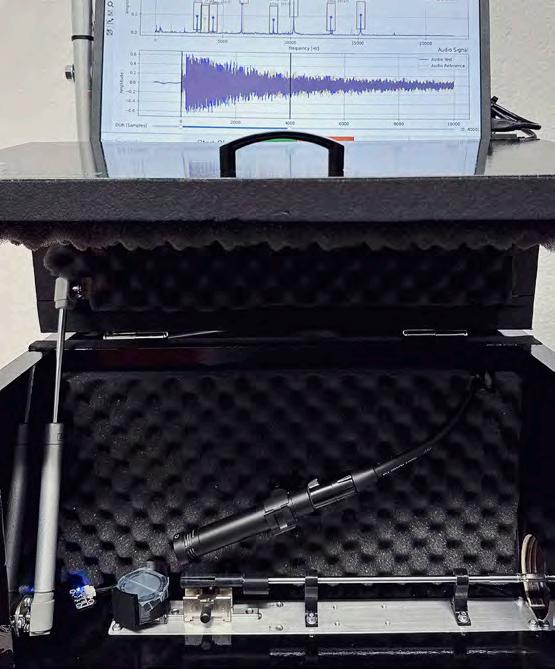
Why did you create it?
The development of a harmonic sound is difficult. If you compare different sound springs with each other, minimal changes are almost impossible to hear. For one person, the watch sounds harmonious, for someone else, it’s out of tune.
But once you’ve found a sound everyone acknowledges as perfect, you want to be able to reproduce it. And then you want to make sure that all the watches sound the same when they come to market. The idea for the Soundcheckbox was born as this is the only way to compare sounds and make measurable modifications.
How was it made?
Bern’s University of Applied Sciences has a campus in Biel. We presented our idea to the lecturers, and they found a student who took up the challenge. While the student could only make a prototype, it was still perfect prep work. The university’s lecturers completed the project.
Were there any difficulties?
A first challenge was the development of a suitable box in which tests could be carried out – a small soundproof room is necessary to avoid any disturbing noise. Equally tricky was the noiseless, automatic triggering of the sound. Here, an extremely quiet motor had to be evaluated to drive the crown so that the gong could be triggered. The whole project took a year and a half – it wasn’t easy.
8
Sound check
Christopher Ward’s technical team has helped birth a machine that ensures consistency of sound in its chiming watches
How will you use the Soundcheckbox in the future?
Mainly to ensure the quality of our chiming watches. But of course we’ll also use the machine for the further development of sound springs – Bel Canto is not the end of our journey. It’s just the beginning!
The atelier at Biel is busier than ever as we continue to fulfil orders on the Bel Canto. Not only is each watch hand-finished and assembled here, but the quality we deliver is the same as with a £50,000 watch. We won’t compromise.
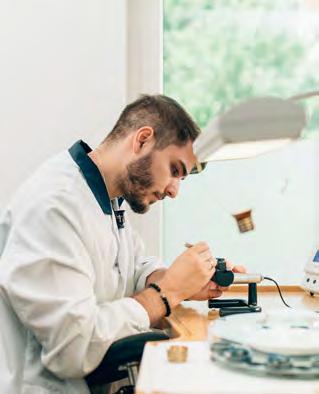
Because of this, we’ve taken on more staff in quality control, purchasing and watchmaking. It’s hard to get staff now the watch market is so strong: there’s a lot of competition for skilled people.
When it comes to our employees, we tend to find them through word of mouth or LinkedIn, but we’re especially keen to take those on board who want to achieve something. We recently recruited a watchmaker from Omega: she was doing the same things every day, and with us, she’ll be learning new skills. That’s a big draw.
The other big project has been The Twelve. There were four of us at the heart of the project: me, senior designer Adrian Buchmann, technical director Frank Stelzer and designer Will Brackfield.
We took our time on this watch. The 3D CADs arrived last spring, and we only moved into the prototype phase when we were happy. This meant we didn’t have any significant last-minute changes. Our goal was to launch in May 2023 – and we’ve managed it.
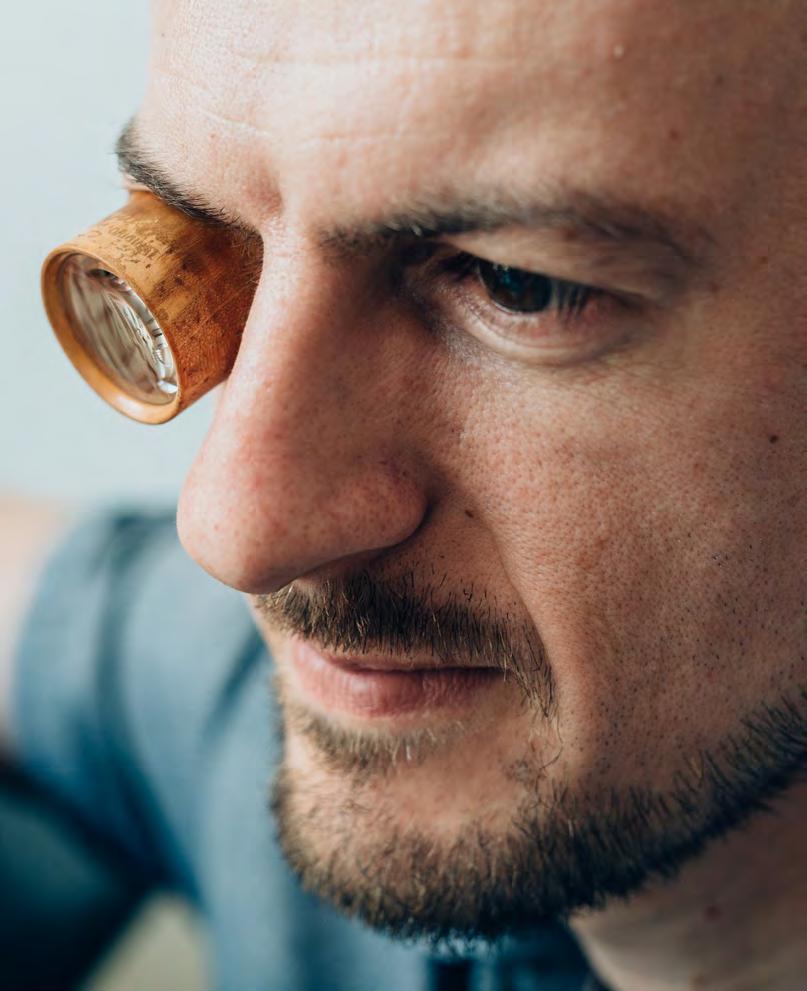
Despite the price difference, I’m proud that the same amount of thought has gone into The Twelve as the Bel Canto. This shows that our goal of putting quality watches in the hands of as many people as possible is being achieved.
Now, I need to go back to finding more staff!
Product
Jörg Bader Junior, Head of
9
Letter from Biel
Motorsport has always been one of the pillars of Christopher Ward’s watch output.
And few were more important than the C70 GP series. Released in March 2015 and inspired by the golden era of motor racing, the four limited edition watches celebrated the inaugural Grand Prix held in Britain, France, Italy and Belgium.

“We created a design for the C70s that was incredibly distinctive with the number roundels used on the cars at the time and the racing colours combining to great effect,” says CW CEO Mike France. “Italian Racing Red was popular, but British Racing Green always took the chequered flag when it came to sales!”
The different dials were based on national colours, with the winning drivers and times engraved on the side of the case. You could also see the host-nation flags in ceramic beneath a sapphire crystal on the backplate.
Each watch was powered by the ETA 251.264 COSC, a 27-jewel quartz calibre, and one of the world’s most accurate movements. For Mike, the series’ success was a sign that CW was starting to have an impact.
“It was the first collection that was copied by a competitor,” he says. “Links of London ran a line that was almost identical to ours. But we didn’t have the time or money to do anything about it and to be honest, we were flattered.”
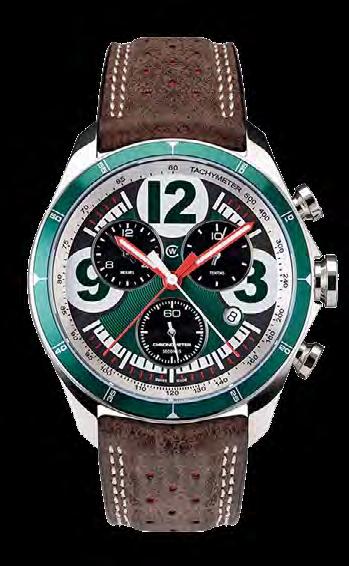
C70 GP Series
10
Release: 2023
Christopher Ward’s most recent bracelet is undoubtedly the best so far – and one that’s been improved in every way. But this is a company that doesn’t like to rest on its laurels. Which is why designer Will Brackfield has been working on a new bracelet with a distinctly dressy feel.
“The new bracelet is being made to celebrate two years of the Sealander,” he says. “For now it’s staying with the Sealander Collection, though it will go to other dress watches in the future.”
The big difference between this and the regular bracelet are the links. “This bracelet is more jewellery-like,” says Will. “There are lots of small independent links that flow on the wrist and mould to it. It’s also entirely polished, so it plays with the light more. It’s also easier to adjust.”
Christopher Ward has long believed the women’s watch market has untapped potential, so the luxurious feel of this new bracelet is an attempt to appeal to females as well as males. Another difference is the fastening.
“It will use the deployment, or butterfly, clasp – as invented by CW’s Jörg Bader Senior – which will be hidden under the bracelet. It opens up on both sides rather than through one hinge, and makes fastening it almost instant.”

As yet, the bracelet has no name, though suggestions are always welcome.
The new Christopher Ward bracelet will be available soon
11
Meet Associate
Professor Jeremy Hobbins, the man behind the BA (Hons) Horology course at Birmingham City University, which is helping to shape the next generation of watchmakers

Degrees better
12
British horology is undergoing a renaissance, with micro-brands popping up around the country, larger companies like Christopher Ward competing – and beating – the most esteemed names in watchmaking, and the new Alliance of British Watch and Clockmakers proving to be a unifying voice for the industry.
One of the key drivers for people looking to get into watchmaking is the BA (Hons) Horology course at Birmingham City University. Here, course head, Professor Jeremy Hobbins, tells us how the degree prepares his students for a career in watchmaking – and why he still considers himself a ‘fixer’.
Hi Jeremy. How did you become a horologist?
The horology course I studied in the 1990s followed the distance learning course of the British Horological Institute. But during my time as a student, the university created its own HND [a qualification] pathway. That ran alongside the BHI course. When I was brought back here to lead the BHI pathway, my former lecturer was still here, but he took early redundancy and I took over the whole provision.
For a number of reasons, having both a further education course (BHI) and a higher-level course (HND) running side by side was complicated, so we united everything into a degree format.
I consulted with the industry to make sure the course had everything it needed and the right academic outcomes to qualify as a degree status. We launched it in 2012 and it’s been growing ever since.
What type of students do you attract?
The average age is in the early 20s. The majority have thought deeply about what they want to do because it’s so expensive to be a student. Most are drawn by the glitzy world of watches – around 70 percent –though a small cohort are drawn to clocks, too. We have the occasional student who comes here to indulge themselves: some see themselves as the next George Daniels or Roger Smith, and think it’ll be relatively easy to design and build their own watches. They find that’s not always the case!
What are the key skills you teach?
There’s a difference between teaching, and training, somebody. We’re developing the flexibility of individuals to shape their own career path. I give my students the ability to project-manage, plan, research, work in groups (or alone), and to present themselves and their work across a variety of mediums.
At the same time, they also pick up a strong knowledge of horological mechanisms: how they work, how they’ve evolved, what are the most common faults – and how to rectify them. In year one, we teach
them an engineering CAD program called Solidworks, which CW’s designers will be familiar with. We show how that software can also be used to control manufacturing equipment.
Tell us about the link between the course and Christopher Ward…
We first met at Salon QP [a watch show] in 2014, and they’ve supported us ever since. Today, CW sponsors a prize on horological movement design for our second-year students. That’s based around two strands: one, working together in groups to design a clock for public space; and second; working solo on a mechanism of their own. In the third year, they actually make the clock.
So traditional skills are vital…
Of course. We concentrate on the practical elements of service, repair and restoring horological mechanisms. A significant part of the course is about those fine hand skills, so students can make bespoke components themselves, but also finish components made by others. In high-end mechanisms, parts are often machine-made, then hand-finished to enable the components to work together. They may also be decorated by hand. We also encourage students to look at other elements of industry, like business. We ask them what it would be like to set
13
Jeremy Hobbins
up and run their own business. How would they promote it? Where would it be sited? How would they work out their financial viability? It’s a broad approach compared to the Swiss way. We find our graduates move to an organisation and move rapidly up to management as they have these additional skills.
What else is Christopher Ward involved with at BCU?
Mike France can see a need in the market for new designers. That’s a new area for us. Before we’d concentrated on how things work, but now we’ll be expanding the design side of things. The course is always evolving!
What sort of jobs do your graduates gor for, and get?
I’m very confident about the employability of my students. When they’re good they’re attractive to employers. I know this because they get jobs quickly. We signpost them to the fact it’s a tough world and they need to demonstrate their skills. And they only get good by spending a lot of time at the bench.
The majority of last year’s cohort signed to employers within three or four days of finishing the course. Going on to work with people like Rolex, Richemont in the Cartier workshops, LVMH in Manchester and even William Oakey at Christopher Ward!
Why do you still love horology?
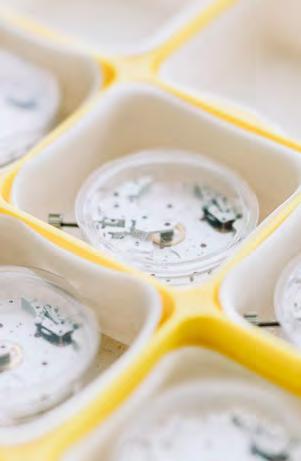
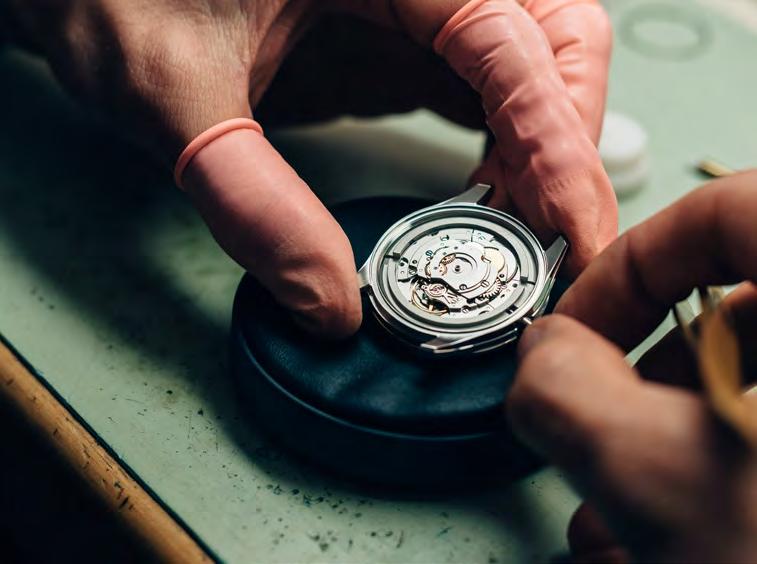
I’m a fixer, I enjoy making things work – whether it’s a mechanism or a group of people.
What drew me to horology was the ‘fairy tale’ that I’d be the next expert on the Antiques Roadshow – a person who could handle things that have been through the generations. I got into education because I became interested in sharing my knowledge. I love it, especially the ‘lightbulb’ moment when a student really understands what you’re trying to get them to do.
14
bcu.ac.uk
”Students get good by spending a lot of time at the bench“
Let’s hear it for the ‘spelunkers’ – the heroic subterranean explorers of the 1970s. And the inspiration behind ‘GMT-explorer’ watches, which provided 24-hour timekeeping for light-starved cavers. Now we’ve resurrected the genre with the C63 Sealander GMT. Not only does it boast a twin timezone movement, a hi-vis 24-hour hand and a dial that’s as legible as it is beautiful, but you don’t have to be a spelunker to wear one. Want to know more?

Do your research.
christopherward.com


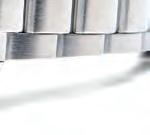


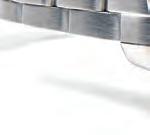


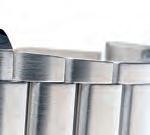

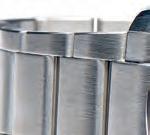







‘Spelunker’: try saying that a mile underground

16 THE TWELVE
WILL BRACKFIELD, DESIGNER

“WE TOOK OUR TIME, WE THOUGHT DIFFERENTLY, WE BUILT BEAUTIFULLY”
17
Taking its cues from the steel sports watches
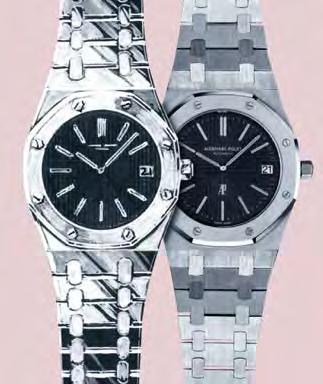
of the 1970s, The Twelve brings industrial design together with a sculpted silhouette and an extraordinary integrated bracelet
Words by Matt Bielby
Watchmaking, like everything, moves through trends – but they’re slow. We’ve had neo-vintage for the past 20 years; blue dials dominating the last decade; and the ’70s luxury sports watch look – all integrated bracelets, sharp edges, exposed screws, textured dials and unusual shapes – epitomising the term ‘desirable’.
These watches look expensive; present amazingly on Instagram; and allow a conservative industry to go wild with bezel designs and surface finishes.
For Christopher Ward, building its own integrated bracelet watch has been a longterm dream, though it hasn’t come easily. But after years of work, finally, it’s here: The Twelve. A watch that’s as gorgeous and covetable as the high-end pieces that inspired it, while retaining the company’s unique value proposition. In the words of watch designer, Will Brackfield: “When it came to The Twelve, we took our time, we thought differently, we built beautifully.”
CW co-founder and CEO Mike France, agrees. “It’s an astounding achievement. But there were times we weren’t sure we’d be able to do it at all.”
Before we take an in-depth look at The Twelve, though, a bit of history.
The luxury stainless steel sports watch is a genre associated with one man – Gérald Genta, the only watch designer most people have ever heard of. In a remarkable five-year burst of creativity, he applied his
distinctive semi-industrial, quasi-nautical aesthetic to three innovative pieces, two of which have since become classics.
The 1972 Royal Oak for Audemars Piguet came first, offering an octagonal bezel, exposed screws, a heavily textured petit tapisserie dial, and an integrated bracelet, while making a distinct virtue of its prosaic, everyday case material. Named after a British warship, taking inspiration from diving helmets, and created at the behest of the Italian market, where mechanical watches were beginning their fight back at the height of the ‘quartz crisis’, it was expected to ruin the company. Instead, it guaranteed Audemars Piguet’s survival, and boosted its prestige.
The smoother, even chunkier 1976 Patek Philippe Nautilus came next: rugged and waterproof but elegant and comfortable, too. This more subtle and versatile iteration refined the concept, its rounded octagon shape taking inspiration from the portholes of ocean liners, while the name came from Jules Verne’s unruly fictional submarine.
Genta also contributed the broadly similar 1976 incarnation of the IWC Ingenieur, and inspired a range of fellow travellers: from the Vacheron Constantin 222 to the Rolex Oysterquartz. All were initially controversial, some didn’t sell, but by the end of the decade they were catching patrician eyes with all the panache of Bianca Jagger astride a white horse on the dancefloor of Studio 54.

18
The Royal Oak, released 1972
Patek Philippe Nautilus, 1976
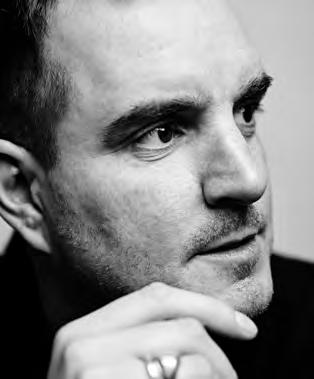



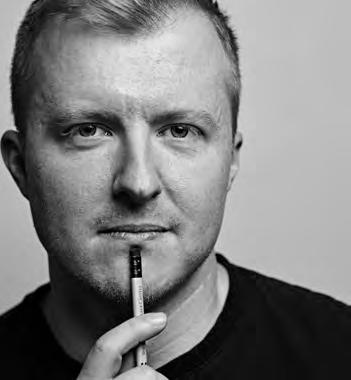

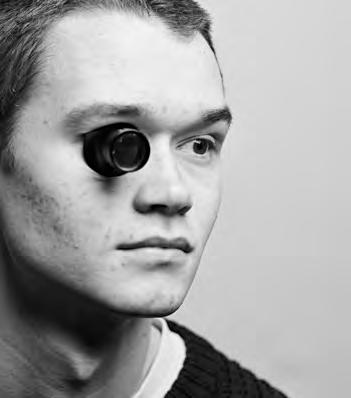


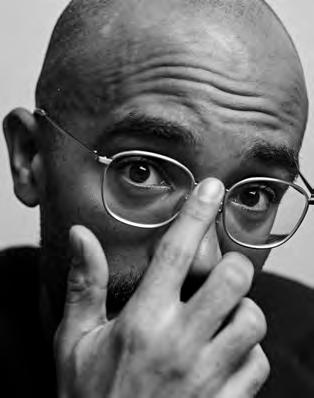

 From design to fulfilment, this is the team behind The Twelve
From design to fulfilment, this is the team behind The Twelve
More recent years have seen all sorts of high-end brands trying to replicate the success of these original gangsters of the integrated bracelet world, while more modest versions, notably the Maurice Lacroix Aikon and Tissot PRX, have been huge hits, too.
Christopher Ward first became interested in this market in late 2017, though long-term fans of the brand may remember two earlier attempts: the quartz C2 Lido and automatic C20 Lido. “Watches before their time,” Mike says. “That this is the C200 shows how far we’ve come!”
Discussions stalled, however, when the company became serious about the C63 Sealander, a project that set some of the same challenges, but in less intimidating form. “Ultimately, Sealander proved a great stepping stone to The Twelve,” Mike says. “It’s also an all-purpose sports watch designed to be worn on a bracelet – just not as style-forward – and it helped focus our ideas. We knew from the start the biggest problem was going to be the bracelet itself. It needed to be of extremely high quality, yet not so expensive that we couldn’t sell the watch at a Christopher Ward price.”
Bracelets had been a problem back in the 1970s too, and Royal Oak and Nautilus were only made possible by the skills of Gay Frères, a specialist supplier known for the likes of Rolex’s famous Oyster bracelet.
For The Twelve, the bracelet breakthrough came with the idea of building it from a series of single links, all of the same design but at different lengths and widths, allowing it to be easily sized. “We could have used a traditional three-link bracelet,” says designer Will Brackfield. “But we would have had to compromise on finishing. Our single links allow the looks and detailing to remain top-notch, while keeping the price down.”
The bracelet opens and shuts thanks to an elegant, next-to-invisible butterfly clasp, operated by pushers at the side.
“Butterfly clasps were actually invented by my father in his early 20s,” says Jörg Bader Junior, head of product at CW’s Biel atelier.
“But, unfortunately, he never patented the design!”
Though The Twelve’s case isn’t the familiar Christopher Ward Light-catcher™ model, it operates on similar principles: the middle-case is high and slim, to visually reduce what’s already a skinny watch.
“Because of its unique 12-sided dodecagonal bezel, with its scalloped, arched look, The Twelve is distinctive in profile or at an oblique angle,” says Will. “For us, the term ‘beautiful finishing’ doesn’t just refer to the highly polished surfaces, but also the way we’ve executed transitions from one finish to another. We’ve three types on the bezel alone – sandblasting, polishing and linear brushing – and getting them all to interact perfectly is one of the most challenging things we’ve ever done.”
More attention was paid to the dial, too. “We wanted a pattern that would interact with light in interesting ways,” Will says. “The idea of using the twin-flags logo came early, which is how we ended up with a repeating pyramid shape – though you wouldn’t necessarily realise it with the naked eye.”
Such a heavily textured dial brought its own problems, not least how to present text upon it. “Some get around this by mounting the text on a flat plate on the dial,” Jörg says. “But we’ve actually stamped the words ‘Automatic’ and ‘Swiss Made’ onto the dial itself, with colour then applied to the raised surfaces. It’s hard to get right, but it looks amazing.”
20
“It’s an all-purpose sports watch designed to be worn on a bracelet”
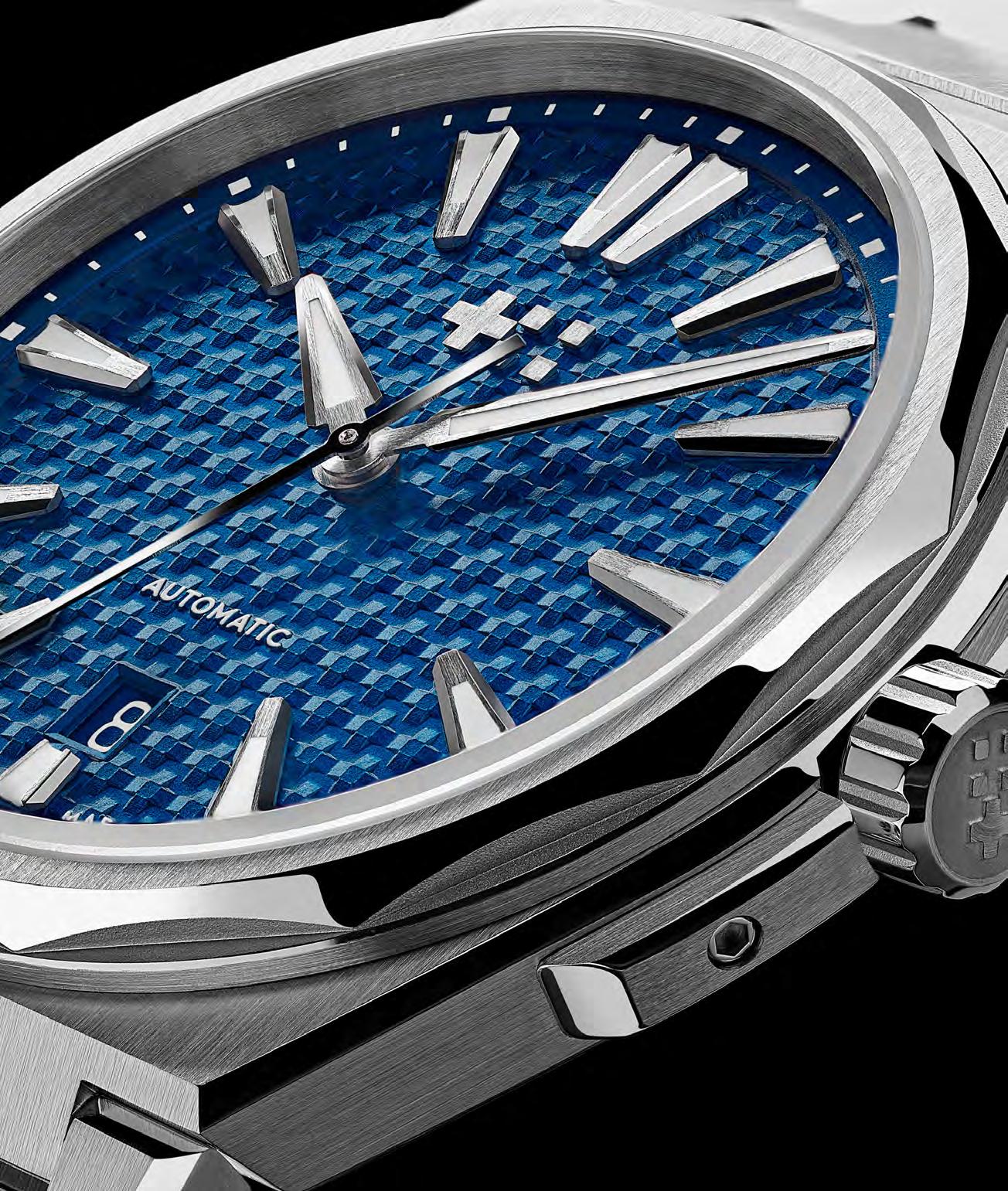
21
Hands and markers had to be distinctive too, using shapes perhaps best described as elongated, rounded-off triangles. “We needed classier, more understated and refined triangles than those on other Christopher Wards,” Will says.
In a tip of the hat to the Royal Oak, exposed screw heads appear too, most prominently on the rear, where they hold down the 12-sided case-back surround. “We’re all about going the extra mile with tiny details,” Will says, “and giving people more than they expect.”
The Twelve comes in two versions, a classic stainless steel model and a yet-more-impressive version in Grade 2 titanium, a strong, light metal that’s notoriously difficult to finish. “At our price point, we were one of the first companies to attempt polished facets on a titanium case,” Mike says. “Even today, not many companies offer an integrated bracelet sports watch in titanium. But we wanted to – partly because its light weight makes wearing one a whole new experience, and partly just to prove that we could.”
The titanium version has a better, more compact movement than the standard steel model – the Sellita SW300-1 Automatic COSC, with its chronometer certification and 56-hour power reserve – which allows for a thinner case, just

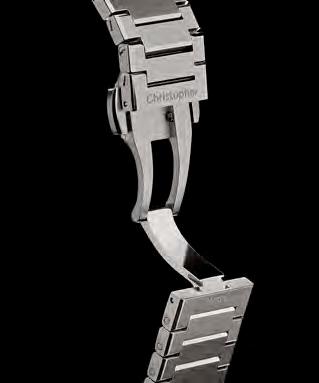
8.95mm tall, as opposed to the 9.95mm of the steel model. And it has a different look too, the dial here treated to a graduated tint, from charcoal at the edges to a bright colour – electric blue or purple – at the centre. Overall, it’s a lighter, more comfortable, more sporty, and better performing Twelve, and still starts at under £1,300.
Not that the steel model is a slouch. Arguably the version that most closely replicates the appeal of the Royal Oak and Nautilus, it uses a Sellita SW200-1 and is reassuringly heavier – although, at 65g, it’s no ‘gym wrist’ weight either. The dial is a single solid colour, available in five shades – and prices start at under £900.
All in all, The Twelve raises the standards yet again for Christopher Ward. “It’s no Bel Canto, of course,” says Mike. “But in some ways the effort we’ve put in is comparable. To get the details as precise as we needed them to be – and this sort of watch lives or dies by the details – was crucial; it has to feel as if carved from a single piece of metal, and really warrant the use of the term ‘luxury’.”
22
“We’re all about going the extra mile with tiny details”
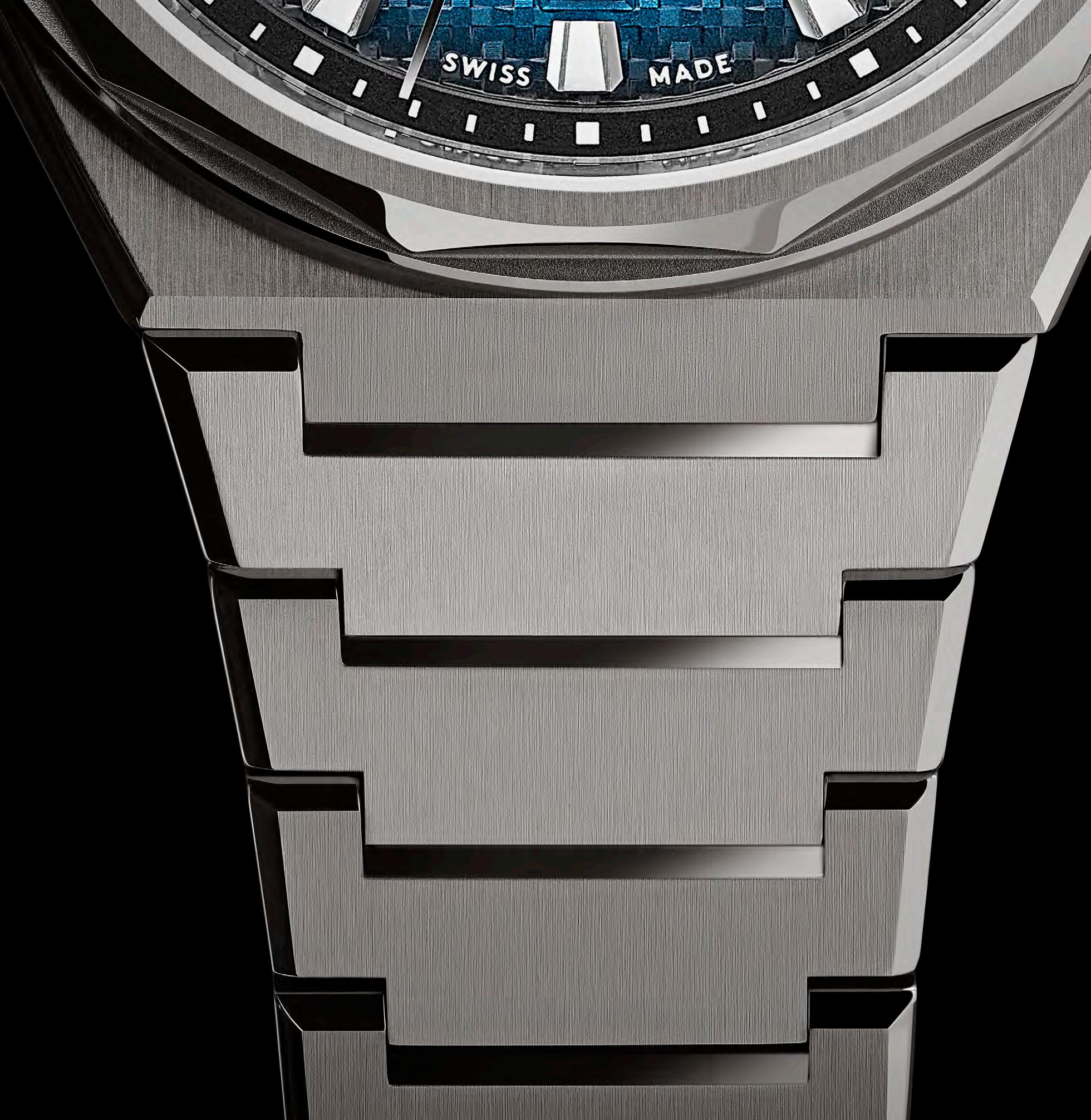
23
“It has to feel as if carved from a single piece of metal”
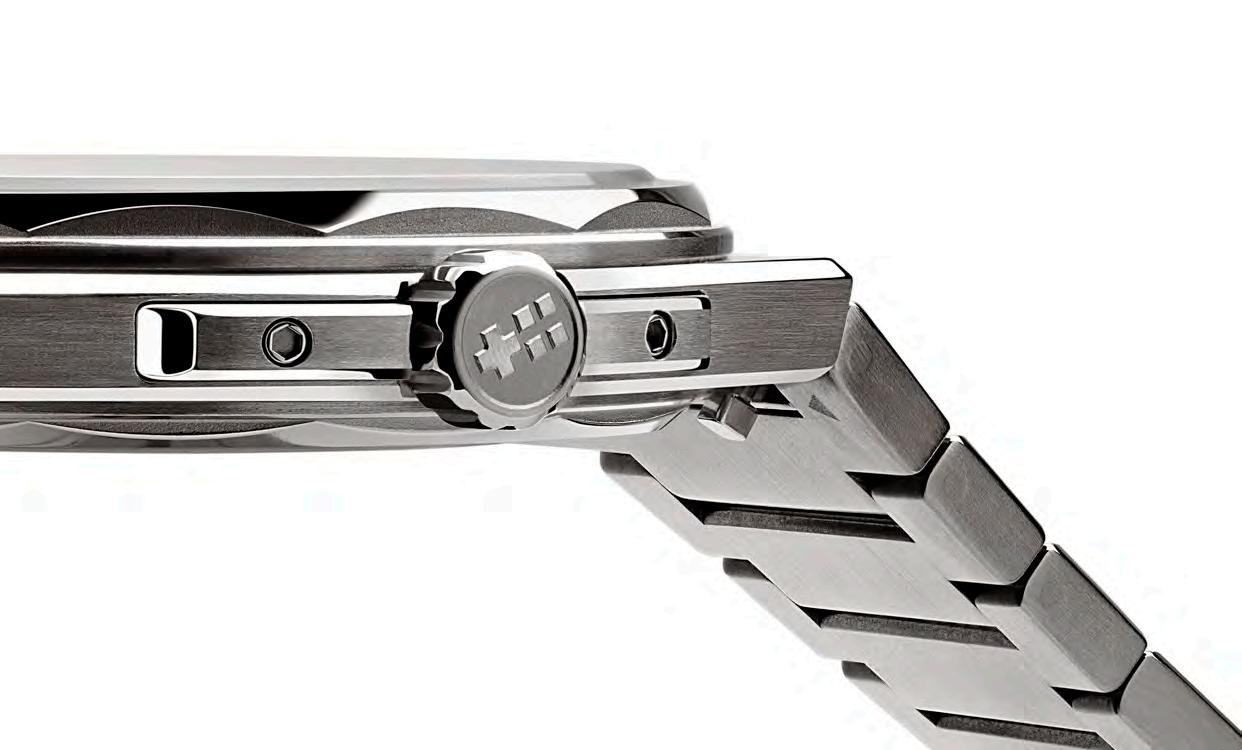
24
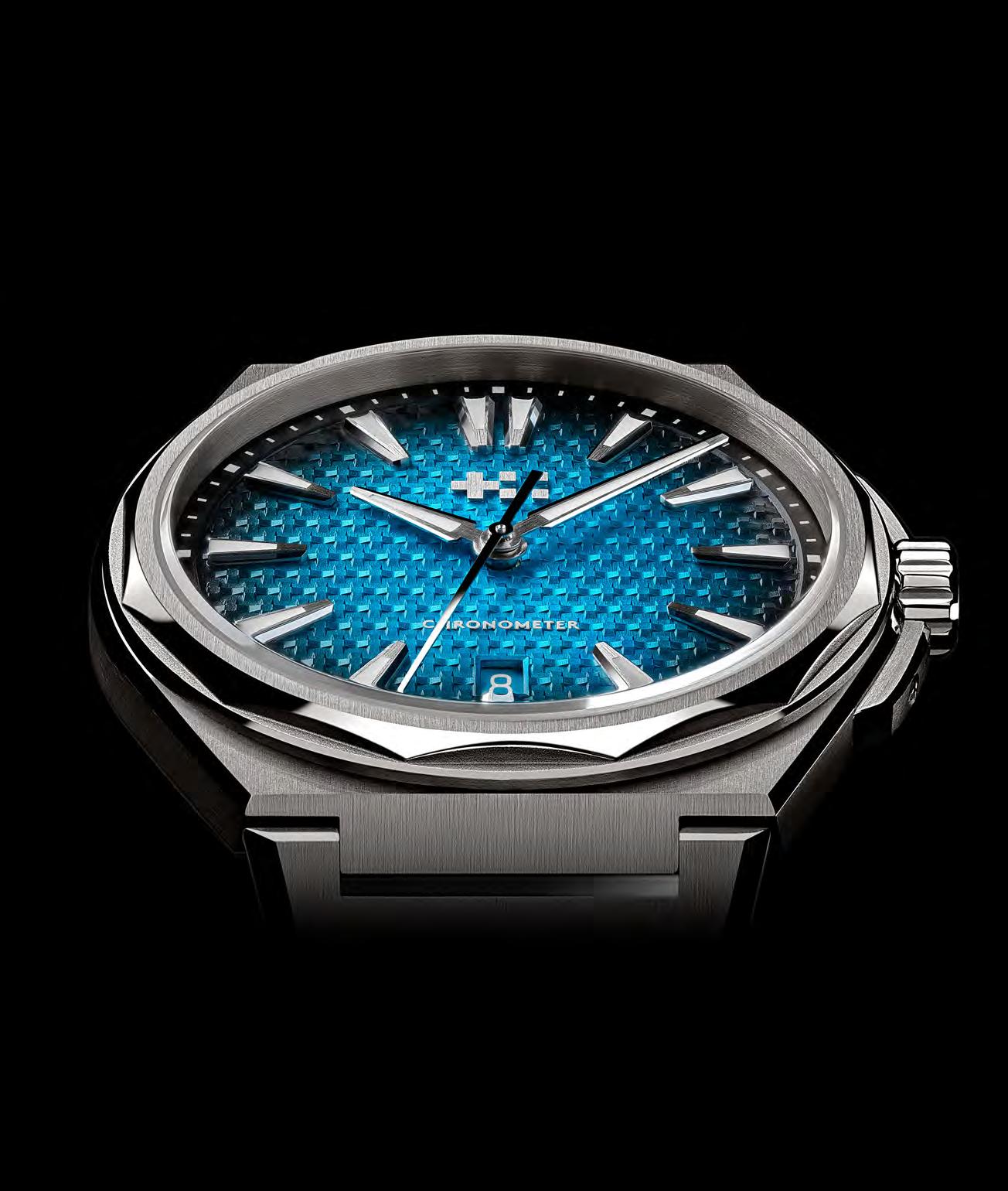
25
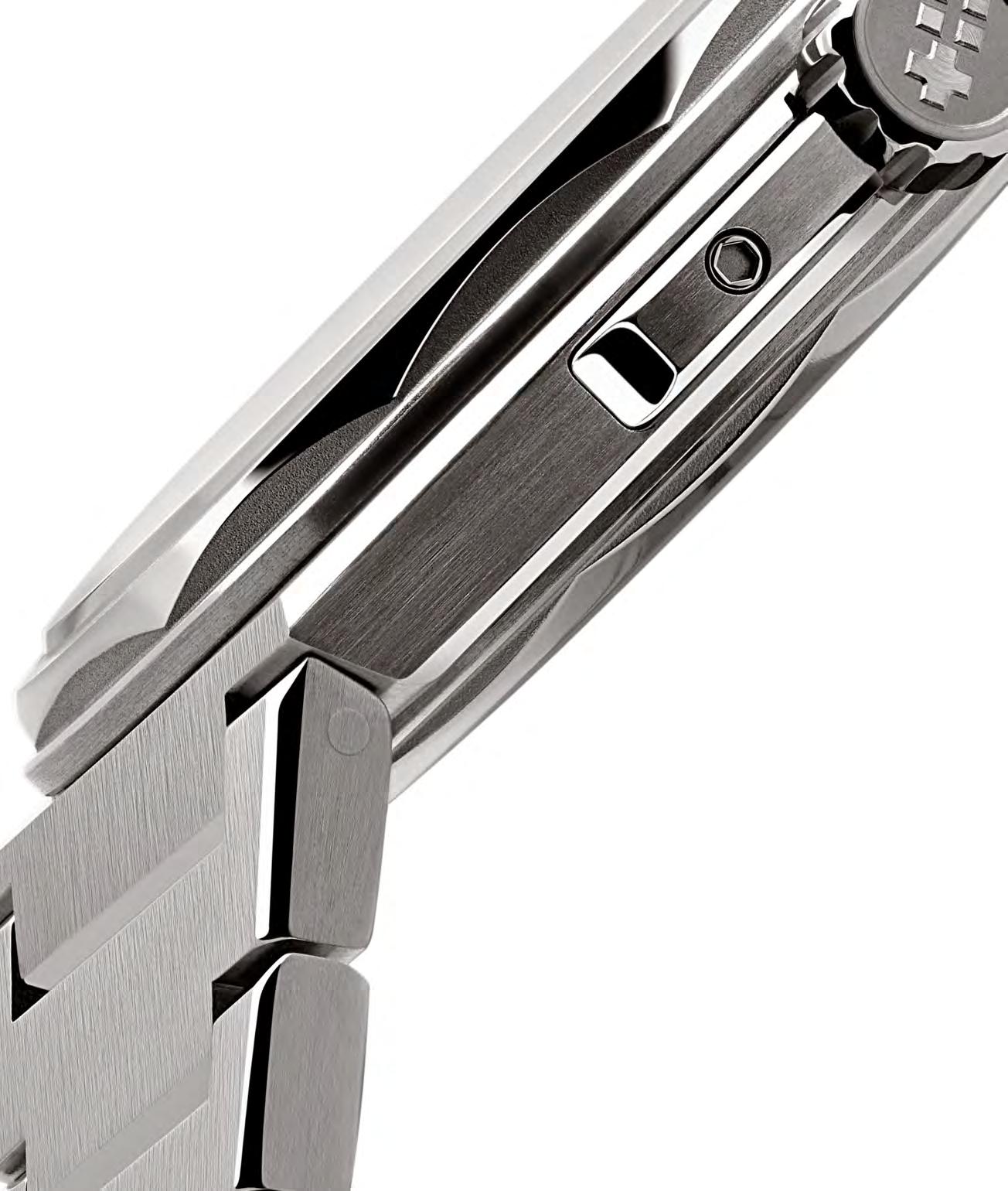
26
The Twelve
Diameter 40mm
Height 9.95mm
Lug to lug 44.65mm
Weight 65g
Strap width 25mm integrated
Case Stainless steel
Dial colours Arctic (white), Nordic (blue), Glacier (light blue), Basalt (grey)
Depth rating 10 ATM / 100m
Movement Sellita SW200-1 Automatic

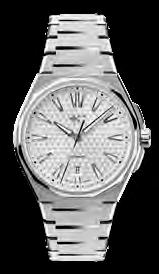
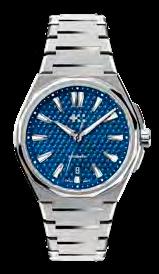
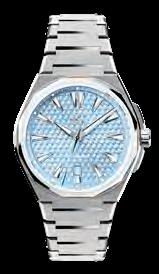
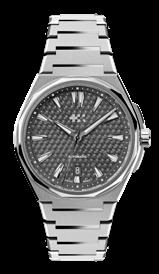
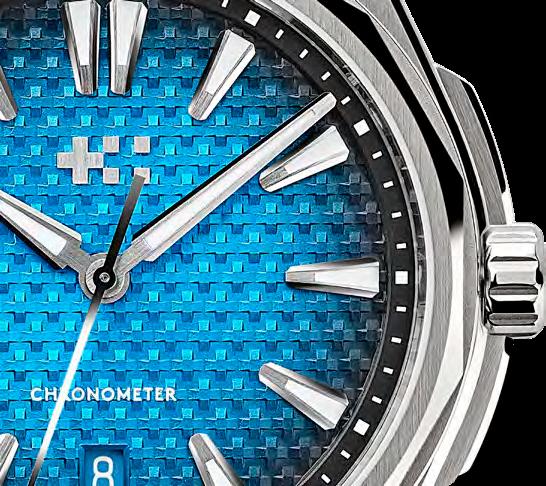
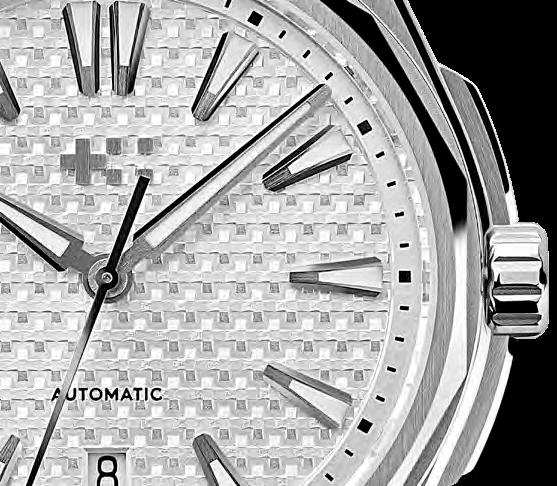
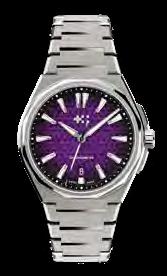
Functions Hours, minutes, central seconds, date
Power reserve 38 hours
Tolerance -20/+20 seconds per day
Available now
Price £850 / $995 / €1,095 on rubber strap; £1,050 / $1,225 / €1,350 on bracelet
The Twelve (Ti)
Diameter 40mm
Height 8.95mm
Lug to lug 44.6mm
Weight 41g
Strap width 25mm integrated
Case Titanium
Dial colours Astral (blue) Nebula (purple)
Depth rating 10 ATM / 100m
Movement Sellita SW300-1 Automatic COSC
Functions Hours, minutes, central seconds, date
Power reserve 56 hours
Tolerance -4/+6 seconds per day
Available now
Price £1,225 / $1,450 / €1,595 on rubber strap; £1,595 / $1,895 / €2,075 on bracelet
27
Grounds for appeal
Remarkable football grounds
A gorgeous new book takes a tour of the world’s most photogenic football stadia
Football stadiums are as intrinsic to a club’s identity as its players.
While footballers come and go, for the most part, the stadium remains. There’s a reason why fans talk about ‘home’ matches – the stadium of our chosen club is often more of a refuge than the place we live in.
While (nearly) every ground has a place in someone’s heart, some are more memorable than others. In fact, a select few are extraordinary. And it’s these that writer Ryan Herman has profiled in a beautiful new book, Remarkable Football Grounds
All football life is here. There’s a stadium surrounded by water, one halfway up a mountain and another with a (removable) forest on the pitch. For Ryan, while there is no perfect ground, some things are a no-no.
“Putting a running track around a football pitch should be banned,” he says. “You want people to be on top of the action with proximity to the players: that’s why West Ham’s move to the London Stadium has been so difficult. You need an ‘end’, a focal point like the ‘Yellow Wall’ at Dortmund. It has a positive effect on the team.”
Ryan isn’t just an enthusiast of bigleague grounds – some of the most memorable football experiences can be found in relatively humble surroundings.
“Lewes FC in West Sussex has a lovely ground,” he says. “It’s unlike anywhere else – a mish-mash of styles. There are even beach houses you can rent out, it’s their version of the executive box!”
While England, the home of football, features heavily in the book, one country has been blessed with breathtaking stadiums.
“Croatia has so many beautiful grounds,” says Ryan. “My favourite is the Gospin Dolac stadium in Imotski near the Bosnian border. The man behind it was trainer/pop singer Fulgencije Fuđo Vučemilovic who had the idea in 1954 that Imotski’s football club should build a ground next to the Blue Lake. Nothing happened for 30 years, then in 1978, they filled in a 30m-deep crater with rocks and built the ground on that. He called it a ‘wonder of the world’. And it is!”
From Norway to Wales, Austria to the Faroe Islands, football and its culture unites every country. And the fact that this simple sport has led to so many architectural wonders proves that Pelé knew what he was talking about when he called it “the beautiful game”.
Remarkable Football Grounds is out now, published by HarperCollins
28

29


31
Previous page: Eidi, Faroe Islands (Alamy)
Left: Henningsvaer, Lofoten Islands, Norway (Mathew/Unsplash.com)
This page: Trogir, Croatia (Alamy)



32
Top: Monaco Stadium (Alamy)
Above:
Ottmar Hitzfeld Arena, Switzerland (Alamy)
Right: Tromso, Norway (Yngver Olsen)


THE GREATEST DANCERS
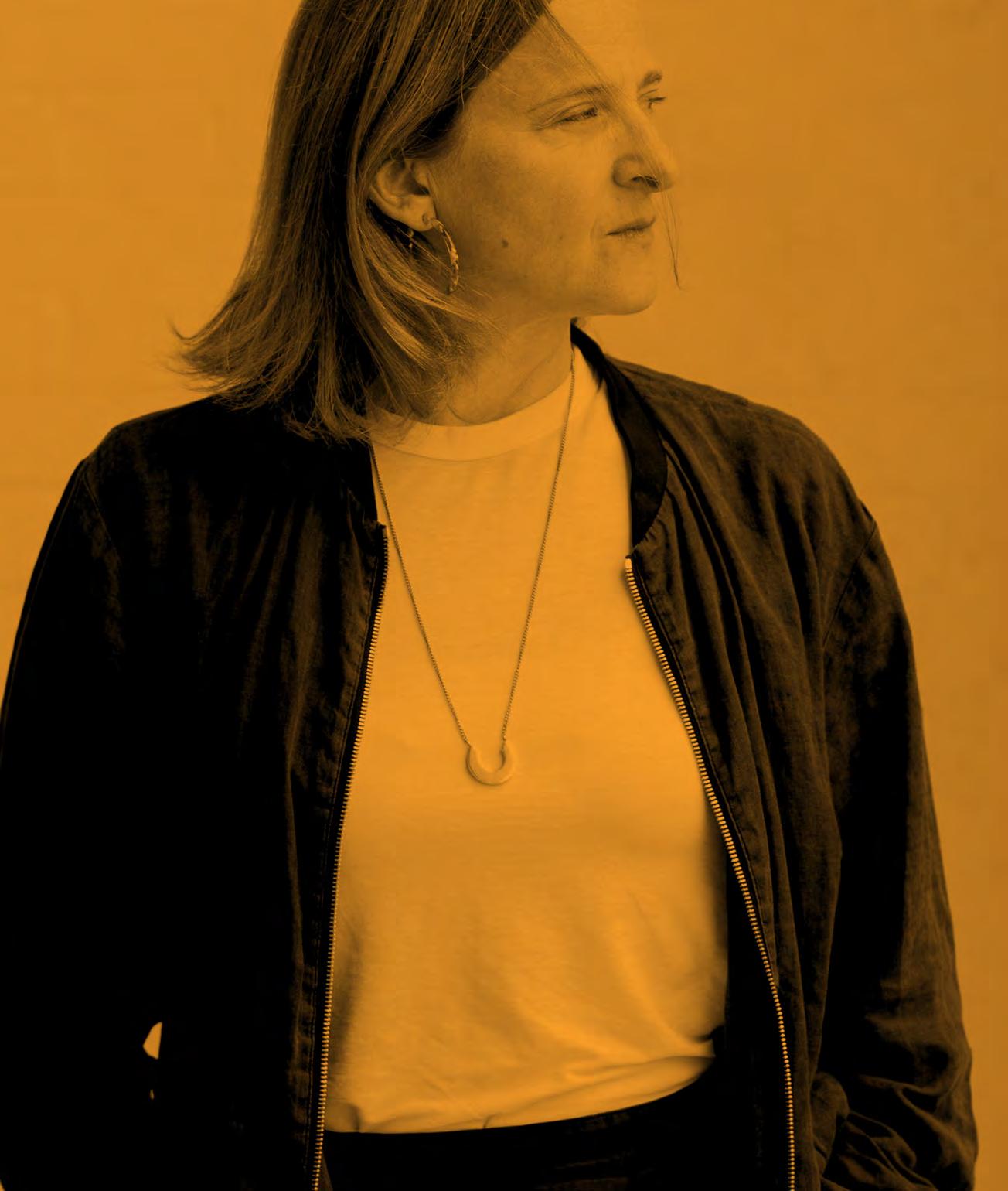
34 Dance Your Way Home
Author Emma Warren has been dancing as long as she can remember.
From school discos in south London to basement jams in Moss Side, she’s found joy, friendship and solidarity on the world's dancefloors.
Now she’s written a book, Dance Your Way Home – part memoir, part history, part anthropology – that investigates exactly why we dance, what dance is and what it says about us as social beings.
“This book is about the kind of ordinary dancing you and I might do in our kitchens when a favourite tune comes on,” she says. “It’s more than a social history: it’s a set of interconnected histories of the overlooked places where dancing happens.”
Hi Emma. Why did you write Dance Your Way Home?
I’d written a book about an underground venue called the Total Refreshment Centre. I put these lines in it: “Dancing in the dark is a human need” and “Dancing is medicine”, and loads of people referenced it when they talked about the book. I thought there was something in here to be drawn out. I started to rethink everything I knew about dance music, which was mainly to do with DJs, producers, and promoters. This became: What is dance music from the point of view of dancers?
Is dancing innate?
It’s essentially human. Some theorists have suggested that it’s actually what makes us human. There’s some excellent evidence about children and dancing. If they move in sync, they form friendships. I tested this out today at primary school, where I’m doing a project – I got the kids to wave their arms in sync with each other. And they were beaming!
Did you dance as a kid?
I’ve written about going to ballet classes before primary school. I realised I couldn’t learn the steps well and was heavy on my feet. I wasn’t being measured on tap or ballet, I was being measured on being a girl. I discovered early on I loved making up my own dances instead.
Is there a difference between formal and informal dancing?
I’d say it’s all dancing. One of the people I’ve interviewed is a woman who runs dance classes for teenage girls. They do improvised dance classes, and it reduces their anxiety afterwards. I said, “I’ve done a lot of improvised dancing in nightclubs. Is that the same as what you do – dance classes in the studio?” She said, “The body doesn’t know the difference.”
You write about having a slow dance with a boy called Leon at a school disco…

The school disco dance is different to the youth club dance, which is different to street or nightclub dancing. The school disco is the most awkward! But it’s a necessary starting point. I think about the excitement of getting ready to go and putting on my white boiler suit, blue plastic jewellery and blue eyeshadow. The enjoyment of hearing music you liked loud in a dark room –even if it was the dinner hall.
With the slow dance, it was tricky. As a girl, you had to wait to be asked, you couldn’t ask a boy to dance. Certain girls got asked first. I wasn’t in that category. When I did get asked, it was a bit of a thrill. Then you have to dance with them once you’ve agreed to it. You’re dancing to someone very close sensually in a semi-public environment. I tried hard to remember what it felt like. As an 11- or 12-year-old, you got a tiny sense of what it would be like to be an adult. It’s a very tender thing. Complicated. But also beautiful. I feel we were the last generation that did that.
35
How and why we dance is the subject of an enlightening new book that takes an indepth look at this most human of activities
Didn’t you have a routine to Colonel Abrams’ Trapped?
Yeah, me and my friend Nikki Wilson. Previously I’d run something called ‘Fame Club’ in my back garden with my two friends – we were obsessed with the TV show, Fame. We used to make up dancers to The Kids From Fame album. This gave me extra confidence for the youth club disco. It’s an analogue version of what people do on TikTok now.
When was your first experience of clubbing?
The first club I went to was Rage at London’s Heaven in October 1988. I was 16. There were people from my year at school there. Loads were underage. The bouncer rolled his eyes and said: “Go on” and let us in. I sensed a heaviness I really liked. The physicality of it. The loudness. I loved it. The emergency doors were rattling because it was so loud.
What’s it like on the dancefloor during moments like this?
If we’re talking about ‘culturally powerful dancefloors’ – those that will be written about – you’ve got many people of different ages, ethnicities, genders and gender expressions. They’re all there for the music and six hours of dancing. They’re also there for another reason: I think it’s a need. You’ve got something you’ve got to ‘dance out’. Those dancefloors contain a lot of need and transform it into something manageable. There’s a quote from a guy called Sting, who ran a rave called Telepathy, and he talks about people coming into their rave. “We’d see this man come in and think, ‘Boy, he’s gonna be trouble, and we’d see him at the end of the night, skipping.”
What does a great dancer look like to you?
There are phrases in the book that tackle this. Toni Basil, who did the song Mickey, talks about why you should “Dance your history”. Frankie Valentine, a really influential UK DJ, says, “Dance your story”. There’s a flamenco dancer saying, “Dance like you, fool!” It’s best when someone brings their own life material on
the dancefloor in a way that only they could do.
Picture the ideal club. What does it look like?
I can see it immediately – a basement. It’s small. It’s dark. And it’s loud, but not hurt-your-ears loud. Darkness can close off your other senses and allow you to tune into the music. What the DJ Ron Trent calls in my book a “whole third-ear experience”. Where you’re not relying on your vision, you’re relying on your body and hearing. Nothing else. The darkness is a portable amplifier!
Does dancing break down barriers?
I was recording the audio book for Dance Your Way Home. The engineer was an Italian guy in his early 30s. He mentioned the music he was into, which was different to what I like. It transpired through the reading we’d been to Plastic People [a ’90s/’00s club in London] – him at the very end of it. The fact we’d both been there immediately bonded us. It was like we’d been to the same school. Dancefloors are like schools and the communities there are like teachers.
Dance Your Way Home is published
 by Faber
by Faber
36
“Dancefloors are like schools and the communities there are like teachers”
Less metal. Same mettle.
When asked for feedback on the C60 Trident, our Forum said “…make one that still gets noticed, without feeling its presence as much on your wrist.” This new C60 Trident Pro 300 is the result. Same widths. Same lug-to-lugs. Yet an average 1.75mm lower profile across the range. By using a sapphire case back, it’s an average 14.67g lighter. too. This means its depth rating is now only as good as a Submariner. To compensate: we’ve added extra lume, a new bezel and an optional screwed-link bracelet. Plus actual compensation of £94 average saving. Less. And more, then? Do your research.
christopherward.com
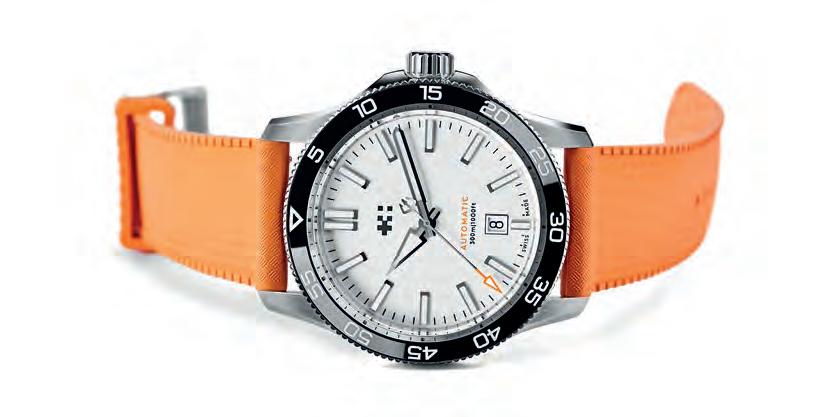

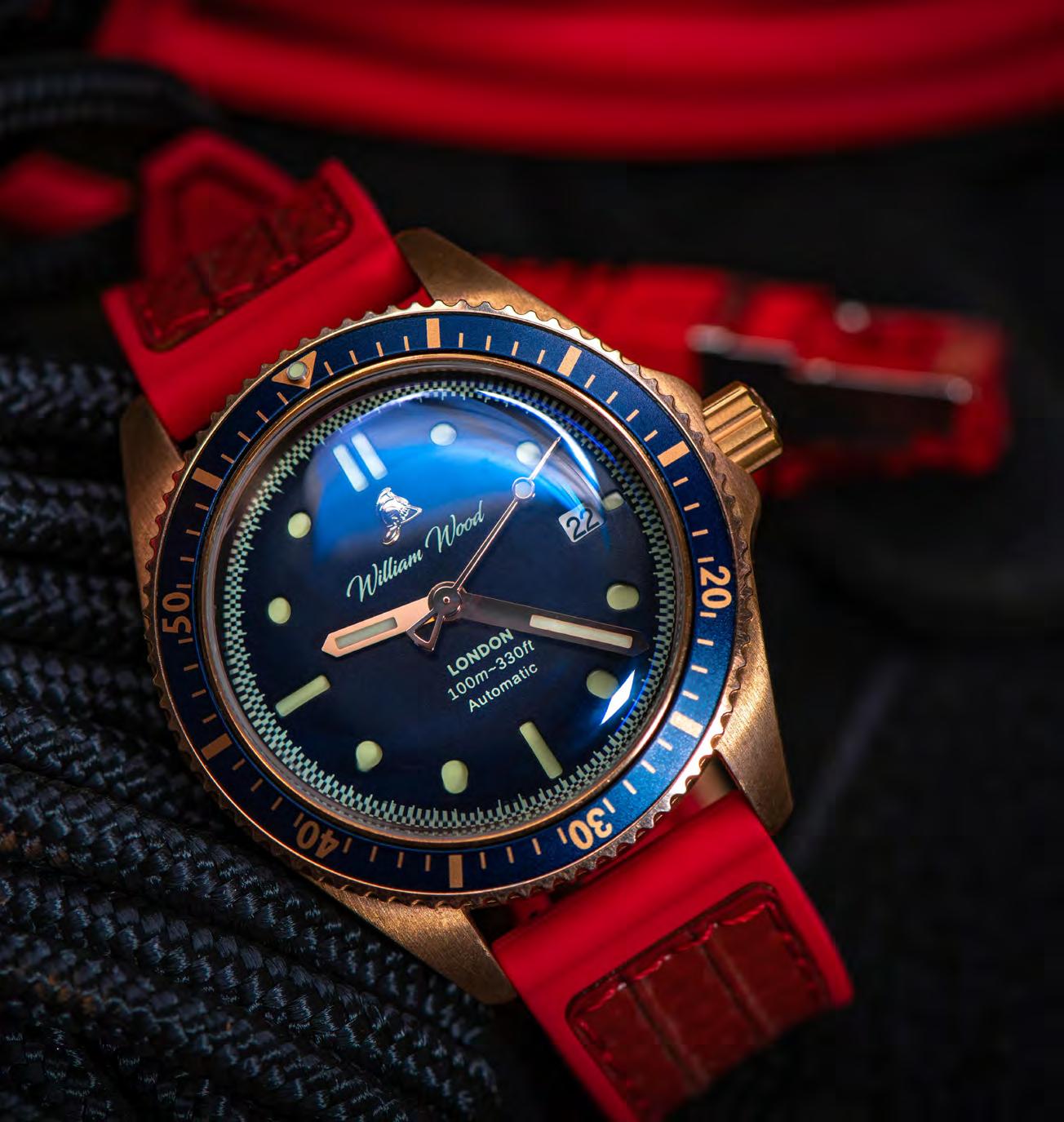

38
Jonny Garrett, William Wood Watches
William Wood
FIRESTARTER
Watch brands have always been associated with activities like diving, flying or motor racing. But it’s unusual to find a watch company dedicated to an emergency service. Then again, William Wood is no ordinary watch brand.
Founded by Jonny Garrett in 2016, William Wood produces a selection of primarily mechanical watches that combine retro designs with quality engineering, each with a tangible link to firefighting in their design and materials.
In a WW watch you will find real British firefighting history beating through every component. Whether it is their watch crown made from a genuine melted-down British brass firefighters helmet worn in the 1920s, or their watch straps made from upcycled fire hose used in real fires around the world.
Where this link to the fire service comes from, and how it’s helping to make William Wood stand out in the ultra-competitive watch market, is something Jonny Garrett is keen to talk about.
Hi Jonny. How did William Wood come about…
I was having a beer with a friend in Wetherspoons – where all good ideas start! – on Boxing Day 2016, and we got talking
about Kickstarter, the crowd-funding platform. Over the next week, I had a series of brainstorms about starting a business, and it kept coming back to watches.
I’d always known that to run a business I’d devote my life to, it would have to inspire both me and others. And that’s when I decided to dedicate it to someone who touched my life more than anyone: William Wood, my grandad, a firefighter stationed in the Newcastle and Gateshead Brigade for 25 years.
What was the first watch you made?
The Chivalrous dress watch, powered by a Swiss-made quartz movement. We started with a quartz model because we were a new brand and wanted to penetrate the market – maybe a mechanical movement would have taken it too far. It’s got some subtle touches: including a commemorative coin in the back made from a melted-down 1920s British firefighter’s helmet – which we put behind a sapphire crystal in the case. In fact, the logo on all our watches is a profile of that 1920s helmet.
You use hoses and fire fighting materials in your watches. Why?
Every one of our watches is made from genuine, upcycled firefighting materials.
Our straps are made from fire hoses: I never knew there was such an array in different colours, and they all have different meanings to fire departments around the world. When we launched the Valiant Collection in 2019, it came on a strap from a red fire hose, which had been used by the London Fire Brigade for over 10 years. You could still smell the smoke! Every fire hose has its own patina, scratches, texture – and stories to tell.
We have the red hose from the London Fire Brigade, yellow from the West Midlands Fire Service, blue from the Tyne & Wear (my grandfather’s fire region) and green from the British Armed Forces Fire & Defence Unit. We recently added orange fire hose straps from the Sacramento fire department in California used in wildland fires, purple from a Japanese Fire Department and a black from the UK Fire & Rescue Service.
Tell us about movements you use…
Our most prestigious watch, the Triumph, is powered by a Sellita 510 chronograph calibre. The watch has three colours, which are named after the ‘fire triangle’ – Oxygen, Fuel and Heat. The watch dials take inspiration from a fire engine dashboard and the case back
39
Creating beautiful timepieces with a direct link to firefighting, William Wood is yet another example of the British watch industry’s unstoppable revival
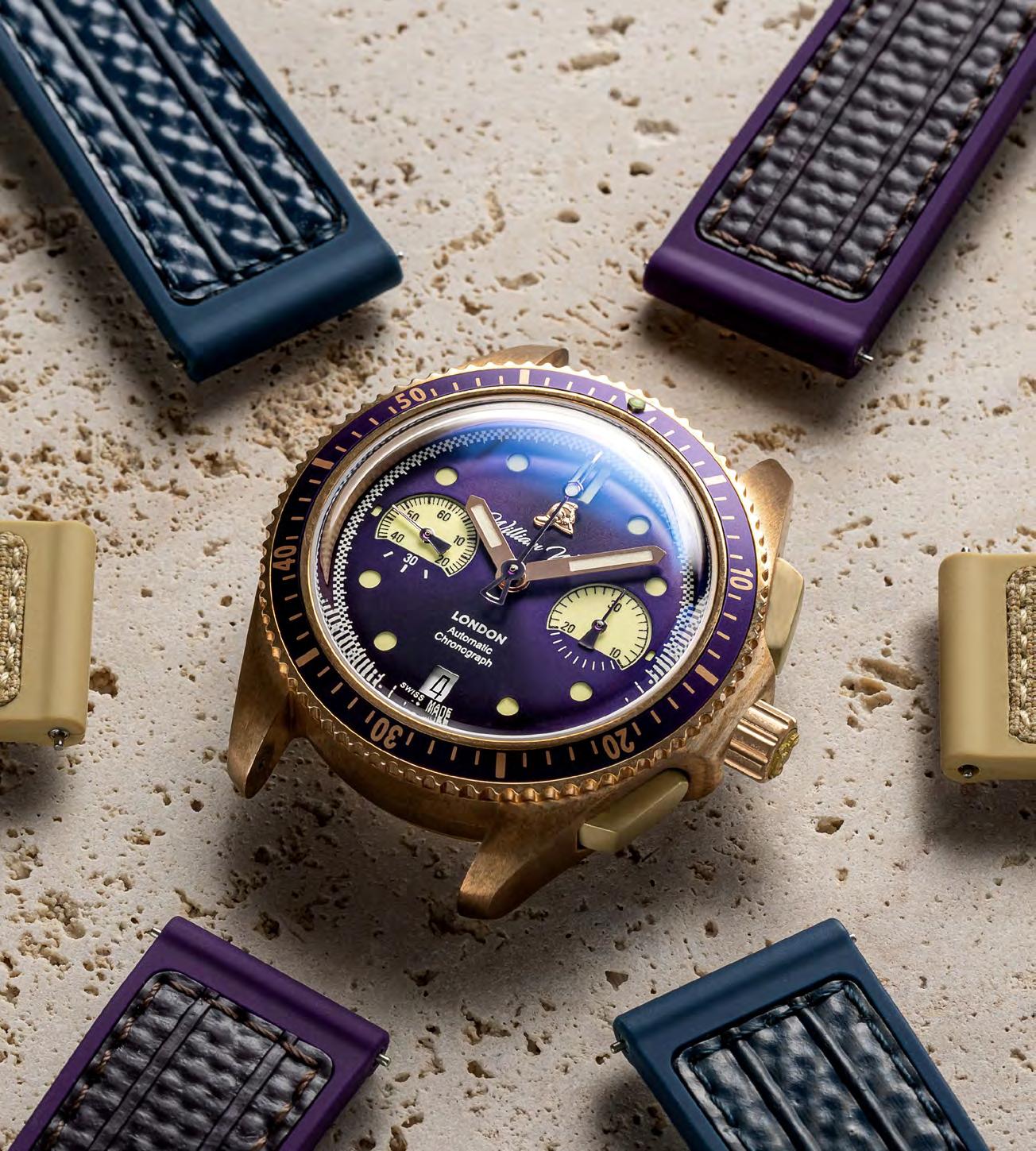 The Triumph Bronze Jubilee watch
The Triumph Bronze Jubilee watch
displays a ‘fire alarm’ that reads: ‘In case of fire break glass’. When you come to our three-hand automatics, available in stainless steel and bronze, we use the Seiko NH35 movement. Our Fearless Collection of field watches is also powered by the Seiko.
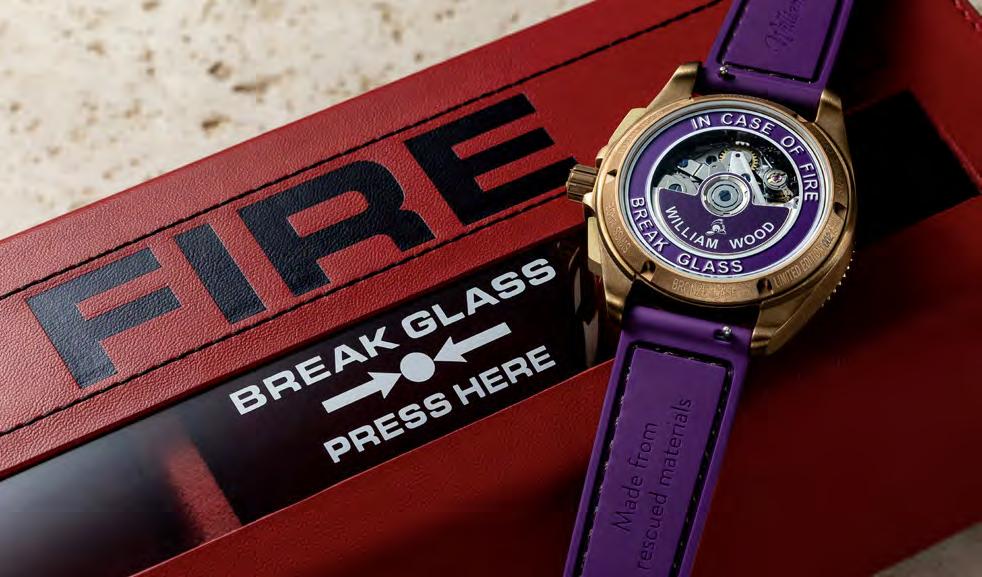
Are you becoming more well known?
I hope we’re seen as one of the key British independents with a unique offering in the world of affordable watches. It’s important to have a strong niche and have fun with it. There’s a camaraderie between the UK watch brands, we want each other to do well – and our goal is to take the industry from £100mn to £1bn. A large number of our customers also own a Christopher Ward, and vice versa.
Your link with firefighting goes beyond watches, doesn’t it?
Firefighting was my grandad’s main career. I wanted to carry his torch, his legacy, in all our watches – and dedicate them to him, and those like him. We also give back – one of our core pillars is charity – we’ve donated over £100,000 to international firefighters’ charities. The main one in the UK is The Fire Fighters’ Charity: when
my grandad was alive he was put in their recuperation facilities in Littlehampton, and the charity paid for his treatment. There aren’t many private organisations that donate to the charity, and we plan to give more. When I see how much our watches mean to people, it chokes me up.
What’s the future looking like?
We’re working toward turning a closed British fire station into a head office and concept store – either in London or Newcastle. Customers will be able to come in and see watchmaking in action, employees will wear upcycled fire hose aprons, and all the old ornate features of the station will be on display. When you buy a watch we’ll go up to the storeroom, down the firefighter pole and you’ll ring a big fire-engine bell to show you’re part of the William Wood family. Parked out front, we have our eye on a 1960s fire engine which we want to convert into our rolling store!
williamwoodwatches.com

41
The Fearless watch
Every watch is made from genuine, upcycled firefighting materials
The ‘fire alarm’ case back
Culture

that’s worthy of your time
The ‘it girl’ is a peculiarly modern phenomenon: a woman – always young, always beautiful – who personifies the spirit of the age. And perhaps the it-est it-girl of them all is Pattie Boyd.

Born in Devon in 1944, Boyd rose to fame in the 1960s as an international model – appearing in the pages of Vogue, Vanity Fair and Elle. But it was only when she became the girlfriend of Beatle George Harrison – who she met on the set of A Hard Day’s Night – that she achieved household-name status.
Her girlish beauty made her, alongside models Jean Shrimpton and Twiggy, the face of ‘swinging London’ and the inspiration for songs like Harrison’s Something and later, Eric Clapton’s Layla and Wonderful Tonight.
However, there was more to Boyd than met the eye. In particular, her prowess as a photographer. Thanks to her access-all-areas position at the centre of the 1960s counterculture, Boyd could photograph the most famous figures of the time in unusually unguarded poses.
Now her best pictures and iconic modelling shots have been collated in a new book, Pattie Boyd: My Life In Pictures. Here you’ll see early images of Boyd – all blonde hair, short skirt and devilish pout, and intimate photos of her and Harrison together.
Other images take in everything from her second husband, Eric Clapton (right), who wooed her away from Harrison, a domestic shot of her driving a Jaguar E-Type
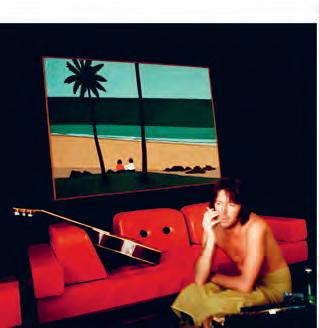
and a contemporary portrait in which her fierce beauty still shines.
As Boyd says. “I believe that photography is a way of capturing a moment that’s gone forever and impossible to reproduce.”
Looking at the images in this book, you’d have to agree.
Pattie Boyd: My Life In Pictures is out now, published by Reel Art Press
43
fox
Twentieth-century
Pattie Boyd, one of the icons of the 1960s is the subject of a book you won't be able to ignore
The mural A time to paint
Liverpool was once considered the home of British horology, famed for its pioneering clock- and watchmakers.
Now a new mural celebrates one of the most important horologists in the city's history, Thomas Barry.
Located in Ormskirk, just north of Liverpool, the mural is the work of local artist Paul Curtis, whose Angel Wings mural is a Liverpool (and Instagram) icon. In the piece on Burscough Street, Paul depicts Barry as a ‘steampunk’ horologist working on his latest creation.
Barry, originally from Ormskirk, is most famous for his 1787 Astronomical Clock, which is on display at the Walker Art Gallery in Liverpool and shows the movements of the sun, moon, planets and stars.
“One of the local councillors referred me to the Thomas Barry clock at the Walker Art gallery," says Curtis. “As soon as I saw it, I knew it could be reworked into a great mural. The heavenly bodies in rich blue skies and gold clockwork immediately started taking shape in my mind. The steampunk look evolved as it seemed to work with the cogs I was painting.”

From start to finish, the mural took Paul six days – and he’s delighted with the result, even though working for someone else often involves compromises.
“As an artist, you always want to do something edgy, but it’s difficult on commissions as the council wants the painting to appeal to everyone,” he says. “So you make little flourishes occasionally, but
you can’t push the boundaries too much. However, it’s one of my favourite works –the colours, mood and composition of the painting come out just right. It’s rare that I’m this happy with my own work, so I hope the town likes it too!”
paulcurtisartwork.com
44
The podcast
History has long been a staple of podcasts. Twenty years after the medium began to be taken seriously, you’ll now find podcasts on every age in history, from mediaeval Europe to ancient Babylon – and everything before and after.
The first serious history podcast is Dan Carlin’s Hardcore History. Using podcasting’s open-ended format, Carlin does the deepest of dives into subjects like the fall of the Roman Empire, post-Viking Germany and – most magnificent of all – Ghosts of the Ostfront, a four-part chronicle of World War II’s Operation Barbarossa.

One of the biggest podcast successes has been The Rest Is History by eminent (and prolific) British historians Dominic Sandbrook and Tom Holland. Now with over 300 episodes under its belt, you’ll find everything from the Watergate affair and Alexander The Great to the murder of Julius Caesar to Spain’s Cordoba Caliphate.
Finally, The History of English podcast. If you’re looking for an exhaustive examination of the English language – and why wouldn’t you? – then this is it. Presented and written by Kevin Stroud, since 2012, the podcast has told the story of English, from its beginnings as an obscure Indo-European dialect to its position as the world’s most widely-spoken language.
When I do count the clock that tells the time, And see the brave day sunk in hideous night; When I behold the violet past prime, And sable curls, all silvered o’er with white; When lofty trees I see barren of leaves, Which erst from heat did canopy the herd, And summer’s green all girded up in sheaves, Borne on the bier with white and bristly beard, Then of thy beauty do I question make, That thou among the wastes of time must go, Since sweets and beauties do themselves forsake And die as fast as they see others grow; And nothing ‘gainst Time’s scythe can make defence Save breed, to brave him when he takes thee hence.
The poem Shakespeare’s 12th sonnet
Of Shakespeare’s 154 sonnets, his 12th is perhaps the most poignant on the subject of time. Its opening line: “When I do count the clock that tells the time,” refers to the idea that time is constant and can’t be stopped or slowed down.
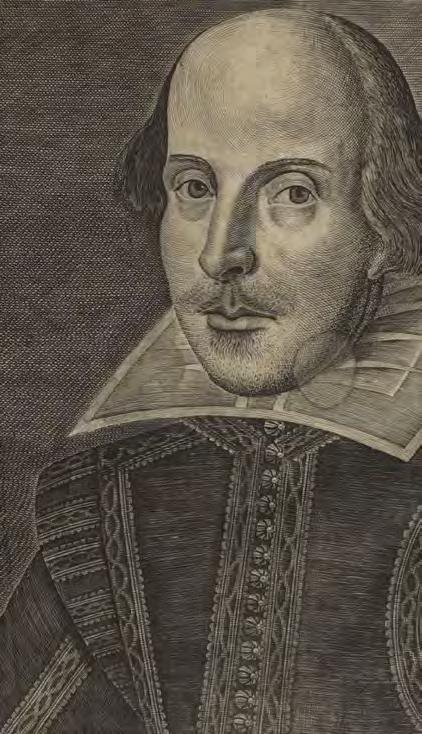
Throughout, the speaker – addressing a friend – uses metaphor (‘violet past prime’ and ‘brave day sunk in hideous night’) to describe the passage of time and inevitable decay. No one, he’s saying, is around forever so we should make good use of our time here.
The solution, according to the last line, is to create more life. “And nothing 'gainst Time's scythe can make defence / Save breed, to brave him when he takes thee hence,”
Which seems like the perfect weapon against the dying of the light.
45
Dan Carlin of Hardcore History
The
ambassadors’ reception
Sometimes I wonder if purists suffer more from high blood pressure, apoplexy, heart attacks and other ailments than do better-adjusted, laissez-faire types.
When it comes to watches, who hasn’t seen some Rolex fanatic go ballistic over a restored dial, or the wrong crown? Ditto for car enthusiasts, who would suffer a meltdown if they saw a Triumph TR-3 with the wrong Dzus fasteners. The reason I ask is because purism also applies to motivation, as in buying a watch for investment (tacky) rather than because you love it (great!), or acquiring a new Leica camera and never opening the box to avoid depreciation (OCD) rather than to take photos (cool).
When it comes to the whys of buying specific timepieces, the reasons are legion, and excuses can be made for all of them. For example: I will never pilot a plane,
but I own a dozen aviators’ timepieces. I don't even swim, but there are at least 20 diving watches in my collection. So sue me. But at least I bought them for the functionality, aesthetics, durability, and – because I am an old fart –legibility.

The best I can say about my behaviour is that I didn’t buy any of them because some C-list footballer, D-list actor, or Z-list influencer wore ’em.
Yes, I am referring to ambassadors who have no relevance whatsoever to the watches they tout, hype, hawk, whore or hustle for in magazines, on hoardings, in films, on billboards and, probably one day, on condoms. Which begs the question of motivation: would you really buy a watch because some actor was paid £3m a year to wear it?
46
Column
Ken Kessler takes a deep dive into the murky, red-carpet world of the watch ambassador
47
I’m guessing that few Loupe readers are 14-year-old girls who ape absolutely everything that Niana Guerrero undertakes, nor anyone who actually gives a toss about anything to do with the Kardashians. Maybe influencers are necessities when flogging shampoo, eye-liner, lip gloss, handbags, or thongs. But when companies over 100 years old, with horological credibility beyond criticism, feel the need for ‘faces’ to sell their wares? Messrs Breguet, Huygens, Harrison, Ditisheim, Arnold, et al. must be spinning in their graves.
Let’s back up a bit, though, lest you write me off as a mere watch geek with no grasp of commercial reality. I do get it, especially as a militant capitalist who wants the watch industry to continue its near-vertical trajectory. I understand Rolex acquiring every square inch of space at every F1 racetrack, and Omega would be crazy not to continue exploiting its genuine NASA approval. But these are legit sales tools: F1 is inseparable from accurate timing, while Omega’s Speedmaster – later the Speedmaster Professional – really did go into space and was the watch that passed all the challenges to which NASA subjected it.
Enough genuine connections exist to outclass the paid-for shills. Eterna outfitted the treacherous Kon-Tiki expedition. Rolexes scaled Mount Everest. Real navies use Tudors and real pilots wear Breitlings. But these are not ambassadors: they are authentic representations of the brands’ achievements. Yes, Omega wheels out astronauts and NASA personnel when suitable, but that cannot be criticised because it is valid. Yes, Rolex has James Cameron
on speed dial and designs watches with and for him but that’s because he went down in a submarine and found the Titanic. You want to own one of the diving watches tested to the greatest depths ever? Rolex’s Deepsea is the real deal, and Cameron is part of the equation.
Sticking with worthwhile envoys you can admire and emulate, the best of all are those who either bought the watches themselves (or wore them in perpetuity after their wives or friends gifted them) or who use them for the reasons the watches were designed for, as with Cameron above. Rolex in particular has always numbered among its extended family members world-class overachievers worth admiring: from opera diva Dame Kiri Te Kanawa to fire-fighter Red Adair to guitar deity Eric Clapton. Heuer’s conscious creation of the ambassador class back in the 1960s involved strapping chronographs to actual Grand Prix drivers’ wrists.
Within the scope of the ‘genuine’ category are silent film star Rudolph Valentino insisting on wearing his Cartier Tank on screen in 1926. Thirty-five years later, Elvis Presley wore his personal Hamilton Ventura in Blue Hawaii Back to Heuer, and Steve McQueen donned the Monaco for Le Mans
Half the A-list male stars in Hollywood during the 1930s and 1940s wore Cartier Tanks. Panerai and Audemars Piguet respectively owe much of their status to Sylvester Stallone and Arnold Schwarzenegger. Jason Statham is partial to wearing Panerais in his films. In each case, the actors made their choices, with – unless you know otherwise – no multi-million dollar cheques changing hands.
48
Would you buy a watch because some actor was paid to wear it?
There are others instances, most famous of all being Paul Newman’s gift from his wife Joanne Woodward, a Rolex Cosmograph that would become the most valuable and probably coveted watch of all time. And Patek Philippe? The aforementioned Eric Clapton collects them, Duke Ellington wore them and half of Europe’s remaining royals would consider nothing else.
There are whole books written about celebs and their watches, but they’re usually by hacks who don’t distinguish between the genuine ones I’ve just cited, and the ones paid vast sums to wear specific watches. And there is a difference. Having met too many of the latter, I know for a fact that most couldn’t give a damn about what watch they wear, and none of them are watch enthusiasts nor aficionados. Which brings me to a personal incident with a would-be ambassador.
Lawsuits are not something I want in my life, so anonymity is in order. Some 15 years ago, the manager of an A-list Hollywood actor contacted me about the suitability, image-wise, of this action hero and the brand that he was asked to represent. I said the match was perfect, except for one thing. The actor in question was a fanatical watch collector, and he would have to abandon wearing any of his vintage pieces from other brands for as long as he was associated with that brand. To his credit, if not to his bank balance, he turned down the offer.
mistake was understandable, as she was (and I believe still is) the face of Dior perfume, but that was no excuse. There are other, similar examples, enough to scare off any wouldbe ambassador who might be tempted to wear the wrong watch.
Charlize Theron was sued by Raymond Weil for wearing a Dior watch
Now we come to the watches worn for a fee – and it’s usually exorbitant. Again, I am not going to list the athletes and actors who have been 1) paid vast sums, or 2) been gifted watches with six-figure price tags, with the understanding that they either appear in ads or are photographed at high-profile events wearing said pieces. There is, for the brands, one overriding justification for paying, say, £2m per annum to some high-profile, disinterested actor to wear their watches: exposure. This has been hammered into me every time I question the appropriateness of some putz wearing a watch for pay. It’s a stock reply: “Ken, it’s not about selling specific watches per se. It’s about building brand awareness. Ask any magazine editors on earth if they want an interview with [fill in the A-list name of your choice] and they will tear off your arm for it, front cover guaranteed.”
He was wise to do so, just in case he accidentally left home wearing any other timepiece. He had seen what happened to Charlize Theron in 2007, when she was sued by Raymond Weil for wearing a Christian Dior watch when she was contracted to wear only Weil’s timepieces. The
Ultimately, the question being begged is obvious, again not thinking about pre-teens buying Hello Kitty Litter. Would you buy a £290,000 tourbillon, let alone an £8,000 diving watch, just because one has been gifted to some footballer, or because it appeared in a movie, or – worse – because some pampered resident of Beverly Hills was handed a few million to wear it? I wouldn’t… but then I’m a purist.
49
The most powerful people in the world often signal their authority not by ostentatious displays of wealth but with understated objects that display their sophisticated taste.
A perfect example of this is John F. Kennedy’s slimline watch, an Omega Ultra Thin (Ref OT3980) given to him in 1960 by Florida senator Grant Stockdale. At the time, JFK was still plain Senator John F. Kennedy of Massachusetts, a presidential hopeful who would take on Richard Nixon in the election later that year.
But Stockdale knew which way the political winds were blowing: the words “President Of The United States John F. Kennedy From His Friend Grant” were engraved into the back.
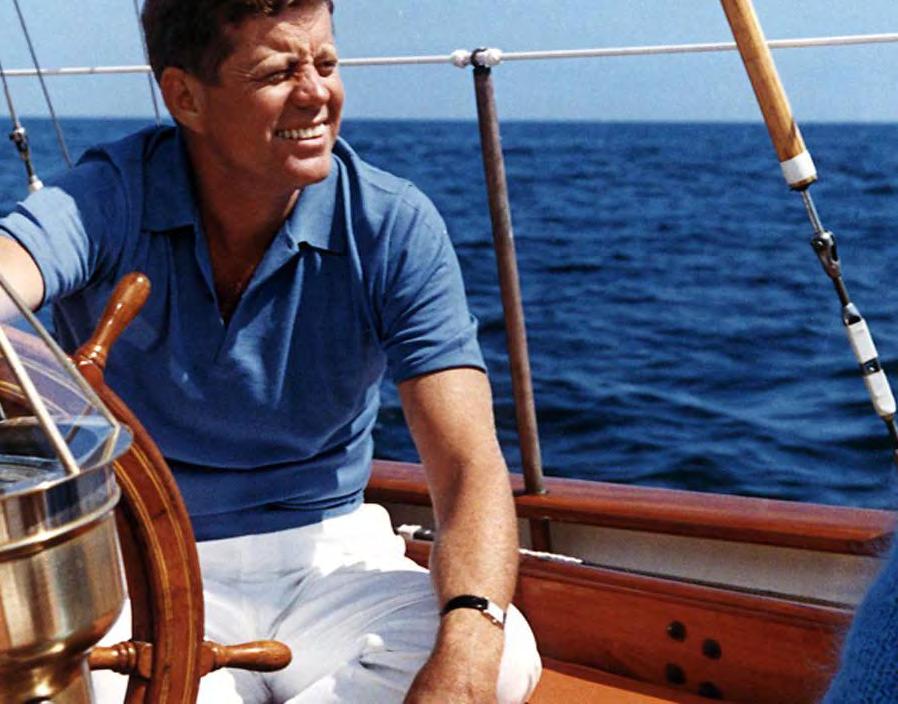
Kennedy’s wife, Jackie, a style icon in her own right, later wrote to thank him, describing the gift as the “thinnest most elegant wristwatch”. When her husband was inaugurated as the USA’s 35th president on January 20th, 1961, he was wearing the watch.
At first – and indeed, second – glance, the timepiece is unobtrusive. Crafted in yellow gold, its rectangular shape and plain dial recall the Cartier Tank, a watch Jackie Kennedy much admired. Compared to today’s watches, it’s not just thin but small – measuring 25.39 x 31.50mm in diameter, with power coming from an in-house hand-wound movement.
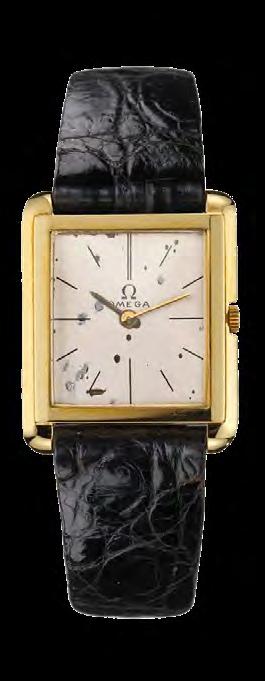
In 1962, by which time Kennedy had made Stockdale US ambassador to Ireland, the President wrote to his friend, signing off with this sentence: “I am now wearing the Stockdale watch. Again.”
After Kennedy’s assassination in 1963, the watch ended up in the Robert L. White Collection – a series of items related to the murdered President. Then in 2005, it was bought at auction by Omega for $350,000, where it remains to this day, alongside the letter from Kennedy to Stockdale.
Great watch-wearers 50
We all have that one special place. Somewhere to de-stress. To breathe. Maybe, even, to create. A trip to one such location sowed the seeds of the C65 Dune Automatic. Updating the eld watch genre of the 1960s to something more sophisticated, it boasts a perfectly proportioned dial, a handset that delivers precision with every tick and a generous amount of lume for after-dark adventures. And the place that inspired it? The ‘White Sand’ dial is one clue, as are the coordinates above. Want to nd out more? Do your research.
christopherward.com

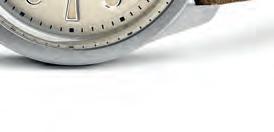

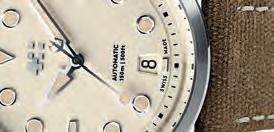
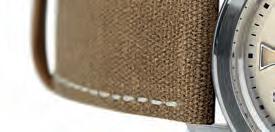

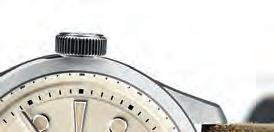



CUSTOMER NUMBER CUSTOMER NUMBER CURRENT RESIDENT OR Christopher Ward 95 Eddy Road, Suite 102 Manchester, NH 03102 PRSRT STD U.S. POSTAGE PAID CHRISTOPHER WARD LONDON, LTD
Meet The Twelve , the newest member of our team on p16























































 From design to fulfilment, this is the team behind The Twelve
From design to fulfilment, this is the team behind The Twelve

























 by Faber
by Faber



 The Triumph Bronze Jubilee watch
The Triumph Bronze Jubilee watch



















